
This project will allow students to monitor how land and water heat up and cool down at different rates using a remote temperature probe.
- Subject:
- Science
- Material Type:
- Activity/Lab
- Author:
- Carrie Robledo
- Date Added:
- 10/13/2020

This project will allow students to monitor how land and water heat up and cool down at different rates using a remote temperature probe.

This parent guide supports parents in helping their child at home with the 7th grade Science content.

This resource accompanies our Rethink 7th Grade Science course. It includes ideas for use, ways to support exceptional children, ways to extend learning, digital resources and tools, tips for supporting English Language Learners and students with visual and hearing impairments. There are also ideas for offline learning.

This is a hands-on project that uses George Orwell's novel, Animal Farm, as the touchstone text. Students work in groups to construct a functioning windmill that can generate electricity. Each student has a role based on the characters in the book. There are also segments of the project that focus on extracting key information from the text.

This series of activities focuses on the world's oceans and their integral role in weather and climate. In step 1, students will identify the basic circulation patterns of the oceans and evaluate the relationship between ocean currents and trade routes of the past. In step 2, students will analyze climatic data from coastal and inland regions and conduct and experiment on the differing heat capacities of water and air. In step 3, students will locate major port cities of the world and identify ocean currents as potential travel routes. In step 4, students will explore El Nino by analyzing satellite-based data and evaluating weather reports for evidence of its occurrence.
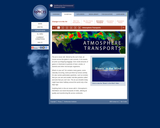
This tutorial describes how air moves across the globe in vast currents.
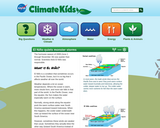
The brief introduction to El Niño presented in this article also offers insights into its role during the quiet 2009 hurricane season. This article is part of the Climate Kids website, a NASA education resource featuring articles, videos, images and games focused on the science of climate change.
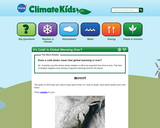
The movement of Arctic air, known as the Arctic oscillation, can and will cause periodic extreme winter weather outside the Arctic region - the harsh winter experienced in many parts of the U.S. in 2010 is a recent example. This article explains the connection between the two events. This article is part of the Climate Kids website, a NASA education resource featuring articles, videos, images and games focused on the science of climate change.

This article explains the role that the ocean- and the effect of ocean warming- plays in determining the temperature differences between the North and South Poles. The article is part of the Climate Kids website, a NASA education resource featuring articles, videos, images and games focused on the science of climate change.
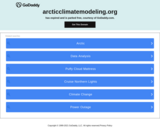
During this project, students observe convection current by performing two lab experiments. As a result of these activities, students develop an understanding of the process of convection, and apply the knowledge to processes in the atmosphere.

In this lesson, students will explore convection using classroom experiments on Earth and then compare the results with the results of the same experiment in the microgravity environment onbaord the International Space Station.

Students explore the difference between weather and climate by investigating extreme weather on Earth and its contributing factors. Students brainstorm a list of weather-related words and phrases. They will then gather information about weather by viewing images and videos and discussing with peers, and then record the information they have learned on a provided worksheet.

In this lesson, students will rotate through six stations in order to gain background knowledge about jet streams and ocean currents. The students will answer questions at each station to elaborate their understanding of jet streams and ocean currents and how they affect local weather.
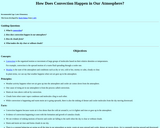
In this lesson, students will investigate how convection happens in the atmosphere and how this affects weather on Earth.

Students use the Internet to collect and compare data from a regional coastal weather station to data from an inland area (along similar latitudes) to determine what effect oceans have on temperature and climate.
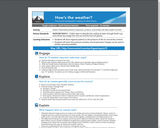
Explore relationships between temperature, pressure, and humidity with daily weather forecasts.
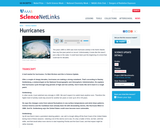
This science update discusses the increase in hurricane activity in the mid 1990s and the proposed reasons for the increase.

This lesson is the first of a two-part series on the science of hurricanes and the kinds of technology being used to identify and track them. In this activity students examine different scientific aspects of hurricanes, all in an effort to begin to understand the nature of motion?particularly how changes in speed or direction of motion are caused by forces.

The Japanese Weather Patterns unit provides students opportunities to interpret and analyze trends in weather patterns over many years in both Japan and the United States. Students will compare the annual rainfall and average temperatures at different times of the year in both places. Students will also identify ways the Japanese culture and weather patterns are reflected in the artwork of Mount Fuji and will construct haikus reflective of Japanese culture and weather patterns as depicted in art.

Students will read a passage and write to answer questions based on the passage. This resource supports English language development for English language learners.